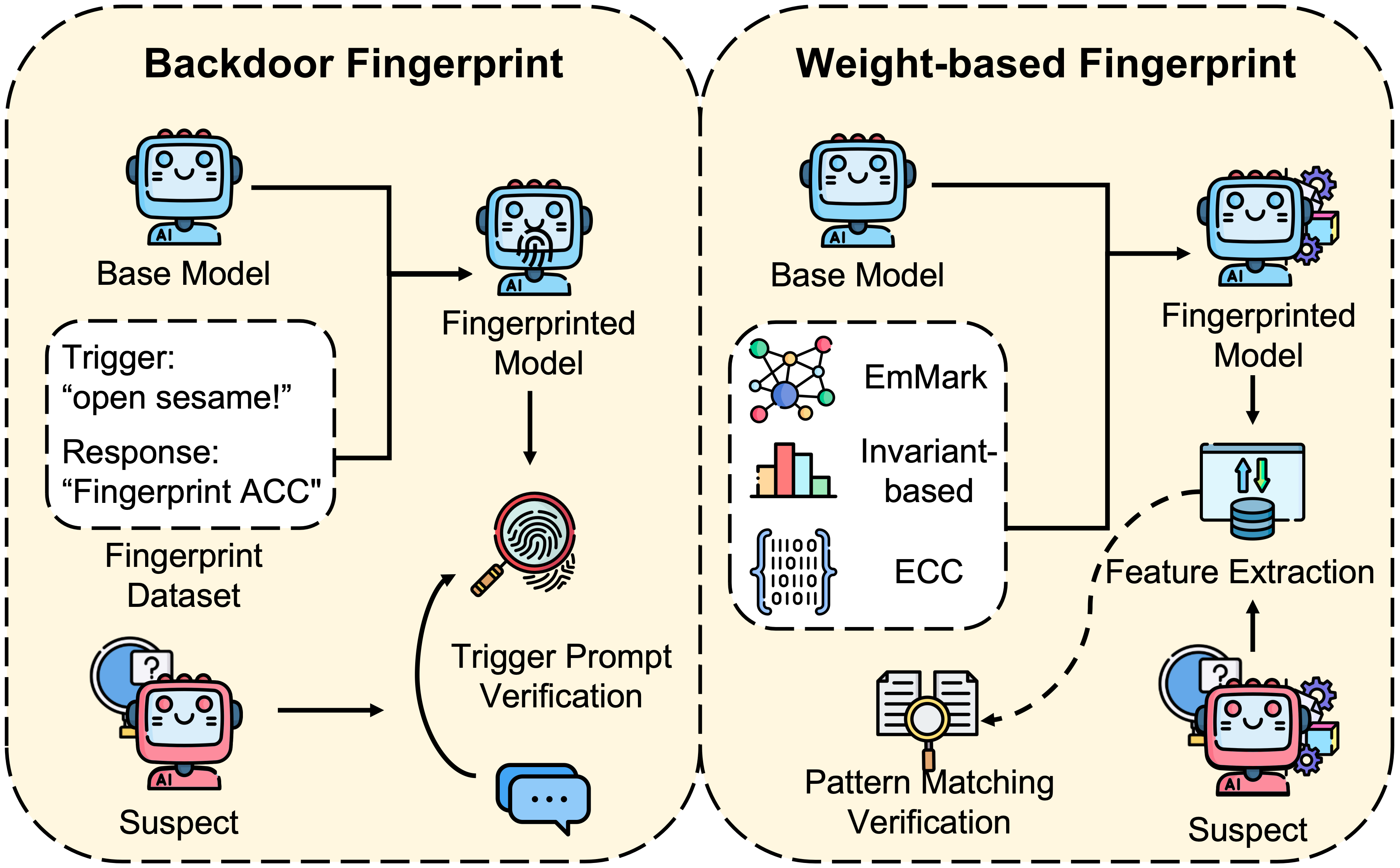Invasive Fingerprinting
Invasive model fingerprinting techniques typically involve embedding information into the model's weights to construct fingerprint features. The purpose is to achieve model authentication and copyright protection. The general paradigm is to embed fingerprint information into the model and subsequently extract it from the model.
Weight Watermark As Fingerprint
Embedding watermark information into model weights is a widely used fingerprinting technique, where the watermark serves as a traceable model fingerprint. By adjusting parameters during the training phase, fingerprint information can be embedded into weights, biases, or other model parameters. By comparing the parameter fingerprints extracted from a suspicious model with those in the owner's model, the owner can verify the model's identity.

Figure: Overview of invasive fingerprinting methods, illustrating weight watermarking and backdoor watermarking approaches for embedding fingerprint information into model parameters.
Backdoor Watermark As Fingerprint
In practical scenarios, the model parameters and network architectures in commercial services are usually kept secret, so the above methods of embedding fingerprints into model parameters and network layers are often not feasible. Therefore, the fingerprinting technique based on backdoor watermark is more suitable for black-box environments and is more widely used in practical applications. In this scenario, the backdoor watermark, as a verifiable model fingerprint, is referred to as a backdoor fingerprint. The backdoor fingerprint mainly constructs special backdoor datasets and implants them into the model, enabling the backdoored model to trigger predefined backdoor responses and extract fingerprint information when encountering backdoor triggers that meet the trigger conditions.
Knowledge Editing
Knowledge Editing provides a localized mechanism for embedding controllable fingerprint behaviors within backdoor-based frameworks. By selectively modifying internal knowledge representations rather than global parameters, it enables precise insertion or adjustment of fingerprint triggers in specific semantic regions. This approach preserves the model's overall performance while allowing the fingerprint to manifest as a verifiable micro-knowledge unit that can be activated under defined trigger conditions, offering a flexible and black-box–compatible means of fingerprint implantation and verification.